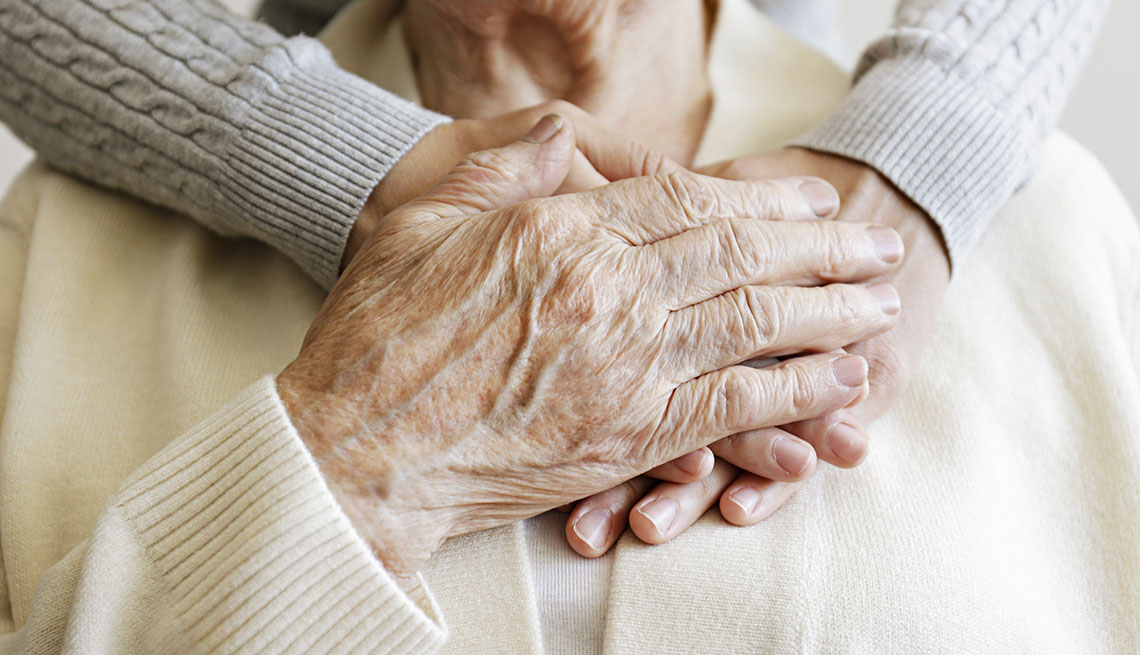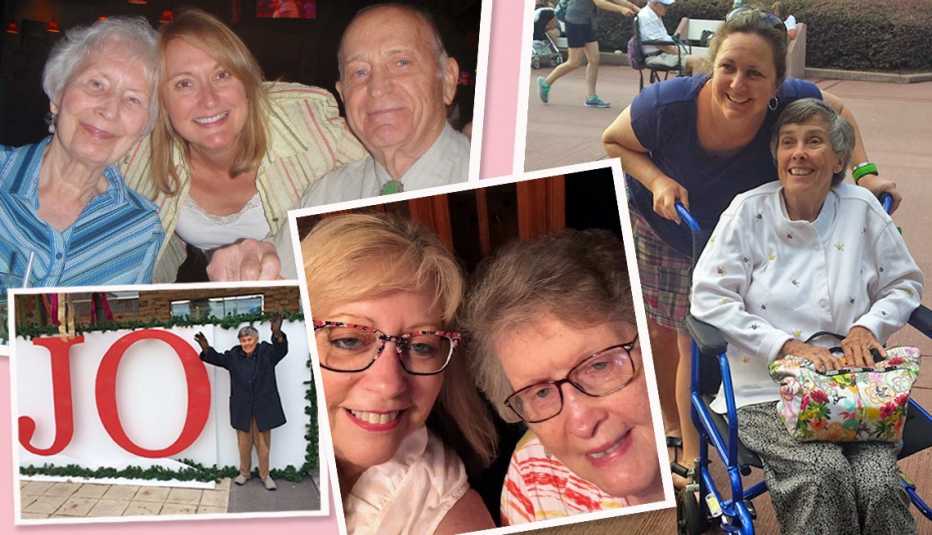Staying Fit
I’ve had the incredible honor of being present for two beautiful deaths.
In 2013 I was in Michigan when a hospice team came to the home for my mother-in-law, Frannie Woodruff. We were all uncertain of what to do and frightened of what dying would look like. The hospice team helped us accept our roles and feel comfortable with each stage as she advanced. I will always have the memory of holding and rubbing her feet as she took her last breath, her sons surrounding her on the very same bed in which they had been conceived.


AARP Membership— $12 for your first year when you sign up for Automatic Renewal
Get instant access to members-only products and hundreds of discounts, a free second membership, and a subscription to AARP the Magazine.
When my own father passed away, two years later, slowly erased by Alzheimer’s disease, my sisters and I were present in the nursing home as he took his last breath. I felt the energy in the room shift and shimmer for a moment as I pictured his soul leaving his body, heading toward the final, unknowable mystery in life.
The hospice teams in those situations were navigators and teachers. They interpreted and instructed us about what was to come, helped to normalize the process and gave each of us roles throughout the journey. Without their guidance and patience (every family must ask some version of the same thing), our experiences might have been much more clinical and laced with anxiety. Instead, we felt engaged and animated as they helped us to understand the ways in which dying is a completion of the circle of life, not something to prevent or prolong.
Death is inevitable, and so we need to honor the fact that loved ones will get old, talk comfortably about the end of life, acknowledge that it’s happening and stop fighting the process. One of the overarching themes that came up while researching this piece was that “people need permission to die” from their families. The dying person needs to feel that their family is supporting their death, and that’s where and how hospice comes in. Hospice helps families and caregivers get into the mindset that “this is happening.” The questions then become: How can we give you the best possible death? What are you afraid of? What life issue is undone, and how can we help you with that?
How hospice differs from palliative care
There is often an understandable confusion between palliative care and hospice care. Palliative care is for people with a life-threatening illness. Even if they are in decline, individuals under this type of care can pursue treatment. Hospice patients, though, are terminal, which means they have six months or less to live. The goal of a hospice care team is to do everything in their means to guide the person to a peaceful end of life with dignity and respect on the individual's terms.
Dorothy Baliban, 63, of Bronxville, New York, is the support/intake nurse at Jansen Hospice & Palliative Care in Scarsdale, New York. She has focused on hospice nursing for the past 10 of her 40-plus years as a nurse. A key part of Baliban’s job is to ensure that people meet hospice criteria. She then begins the end-of-life discussion with the family. “The dying process is physically, emotionally and spiritually intimate, not only for the patient but for the family, as well. One of the first things I establish is who the main caregiver[s] will be for this patient in the home,” Baliban says. “I need to make sure the family understands that even though we’re coming into their home, our job is to work with and support the family and not take over as the 24-hour caregiver.”
“Many aspects of end of life can be hard for families to witness,” Baliban observes. “Caregivers need to cope emotionally with their own responses to death, which can range from feelings of fear, guilt and anger to sadness and depression.” Through it all, caregivers must continue to assist with the activities of daily living, such as feeding, bathing, dressing, toileting and administering medications. “A large part of the job is educating people,” she adds. “As patients enter the end-of-life phase, families must watch for various symptoms, such as a progression from losing the ability to communicate, eat and move, as pain and symptoms increase. It’s also our job to ascertain the family members’ capability of making these observations and make sure they know they can rely on our assistance if difficulties arise. Ultimately, our job is to meet the patients and families where they are in their processes.”




































































